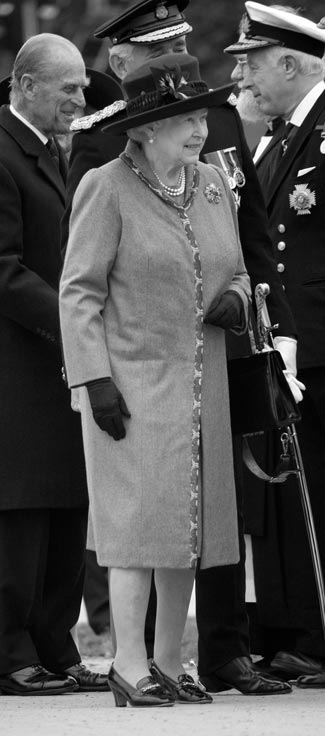

attending the opening of the Armed Forces Memorial
Ian Rank-Broadley, sculptor of the Armed Forces Memorial was most fortunate to be able to have a free hand in both the conception and execution of the sculptures. The sculptures, having started initially as relief panels, and having gone through various phases of both form and ideas, were eventually finalised in the round. Rank-Broadley envisioned a memorial was more than an illustration in Heroism. Eventually the theme of Sacrifice emerged for the two groups of sculptures.
The first group The Stretcher Bearers draws on classical mythology for its inspiration. The death of Petroclus, whose body was carried back to camp held aloft on Achilles' shield having impersonated Achilles by borrowing his armour, became the theme. This episode is transposed to our own time, where the wounded soldier is returned on a stretcher held aloft by his comrades who represent members of the different services. In addition the mother laments her loss as the tearful child clutches her skirt. Behind the Stretcher Bearers the father of the soldier supports and comforts the mother, whose grief overwhelms her. This first group of sculptures bears witness to the sacrifice of life made by that individual.
When it came to the inspiration for the second group of sculpture, Rank-Broadley kept thinking of what would happen after the soldier's body was returned. It seemed important that some resolution be offered to the grieving spectators. In our modern, nominally Christian society, the figure of Christ is still seen as the ultimate symbol of sacrifice. Rank-Broadley wanted to move on from the crucifixion which tormented Christ’s temporal life. As the body of the dead and naked soldier, lying on the tarpaulin, is lifted by the female soldier and Gurkha it echoes the Deposition of Christ.
Read more...